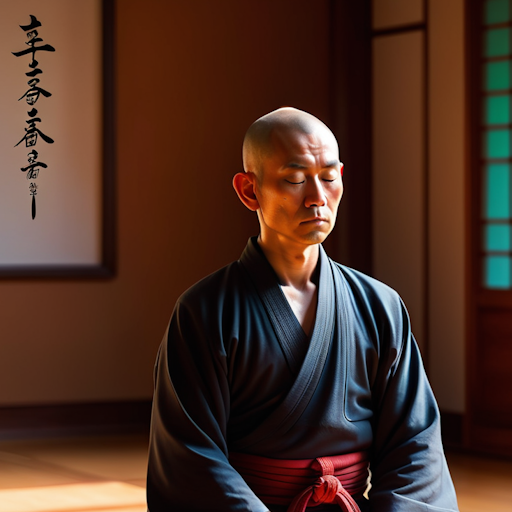Zazen, the cornerstone of Zen Buddhism, is a profound practice of seated meditation that offers practitioners a path to inner peace, self-discovery, and enlightenment. Rooted in stillness and mindfulness, Zazen serves as a timeless tool for achieving mental clarity and awakening to one’s true nature. In this comprehensive guide, we will walk you through the art of Zazen step by step, covering how to set up a meditation space, posture and breathing techniques, and addressing common challenges you might encounter along your Zazen journey.
Setting Up a Meditation Space
Creating a conducive environment for Zazen is essential to ensure a focused and tranquil practice. Here’s how to set up your meditation space:
Choose a Quiet Location: Find a quiet and undisturbed spot where you can sit in peace. Ensure that you won’t be interrupted during your meditation.
Minimalistic Décor: Keep the meditation space uncluttered and simple. This helps create a serene atmosphere that is conducive to inner reflection.

Cushion and Mat: Invest in a comfortable meditation cushion (zafu) and mat (zabuton) to provide support during Zazen. Sit on the cushion with your legs crossed in a lotus or half-lotus posture.
Direction: Traditionally, Zen practitioners face a blank wall during Zazen to minimize distractions. However, you can also face a window or place a simple piece of art or a plant in front of you if it helps create a sense of tranquility.
Posture and Breathing Techniques
Correct posture and mindful breathing are central to Zazen. Follow these guidelines to achieve the right posture and breathing techniques:
Sitting Posture:
- Cross-Legged Position: Choose either the full lotus (crossed legs with both feet on the opposite thighs) or the half-lotus (crossed legs with one foot on the opposite thigh). If these postures are uncomfortable, you can sit in a simple cross-legged position or use a chair for support.
- Spine Straight: Maintain an erect but not rigid spine. This allows for optimal airflow and energy circulation.

Hand Mudra:
- Mudra: Form the Gassho mudra by bringing your hands together, thumbs lightly touching, and palms facing upward. Rest your hands in your lap, touching your body, with the knuckles of the middle fingers aligned.
Breathing Techniques:
- Natural Breathing: Allow your breath to flow naturally without attempting to control it. Focus on the sensation of the breath as it enters and leaves your nostrils.
- Counting the Breath: To help maintain focus, some practitioners count each inhalation and exhalation up to ten, then start again at one. This can aid in concentration.
Dealing with Common Challenges in Zazen
Zazen, like any meditation practice, can present challenges. Here’s how to address common obstacles:
Restlessness and Distraction:
- Acceptance: Acknowledge that restlessness and distraction are part of the practice. Instead of fighting them, gently return your focus to the breath or your posture.
- Mindful Labeling: If your mind is particularly scattered, consider labeling your thoughts as they arise. For example, silently note, “thinking,” and then return to your breath.
Physical Discomfort:
- Adjusting Posture: If you experience physical discomfort or pain, it’s okay to adjust your posture. Do so mindfully, and then return to your practice.
Impatience:
- Non-Attachment to Outcomes: Zazen is not about achieving a specific result. Cultivate non-attachment to any particular outcome and embrace the process of meditation.
Boredom:
- Exploration of Boredom: Boredom can be a rich field for introspection. Observe the sensation of boredom without judgment, and inquire into its nature.
Loss of Motivation:
- Reconnect with Your Intent: Revisit the reasons that led you to practice Zazen in the first place. Your original intent can reignite your motivation.
Conclusion
The art of Zazen is a journey of self-discovery, mental clarity, and inner peace. It is a practice that embraces stillness and mindfulness, offering a path to awakening and enlightenment. With the right meditation space, posture, and breathing techniques, and an understanding of how to address common challenges, Zazen can become a transformative part of your daily life.
Remember, Zazen is a lifelong practice, and each moment you spend in meditation is a step toward a deeper understanding of yourself and the universe. In the words of Zen Master Dogen, “To study Buddhism is to study ourselves. To study ourselves is to forget ourselves.”
May your journey in Zazen be one of growth, insight, and profound realization.